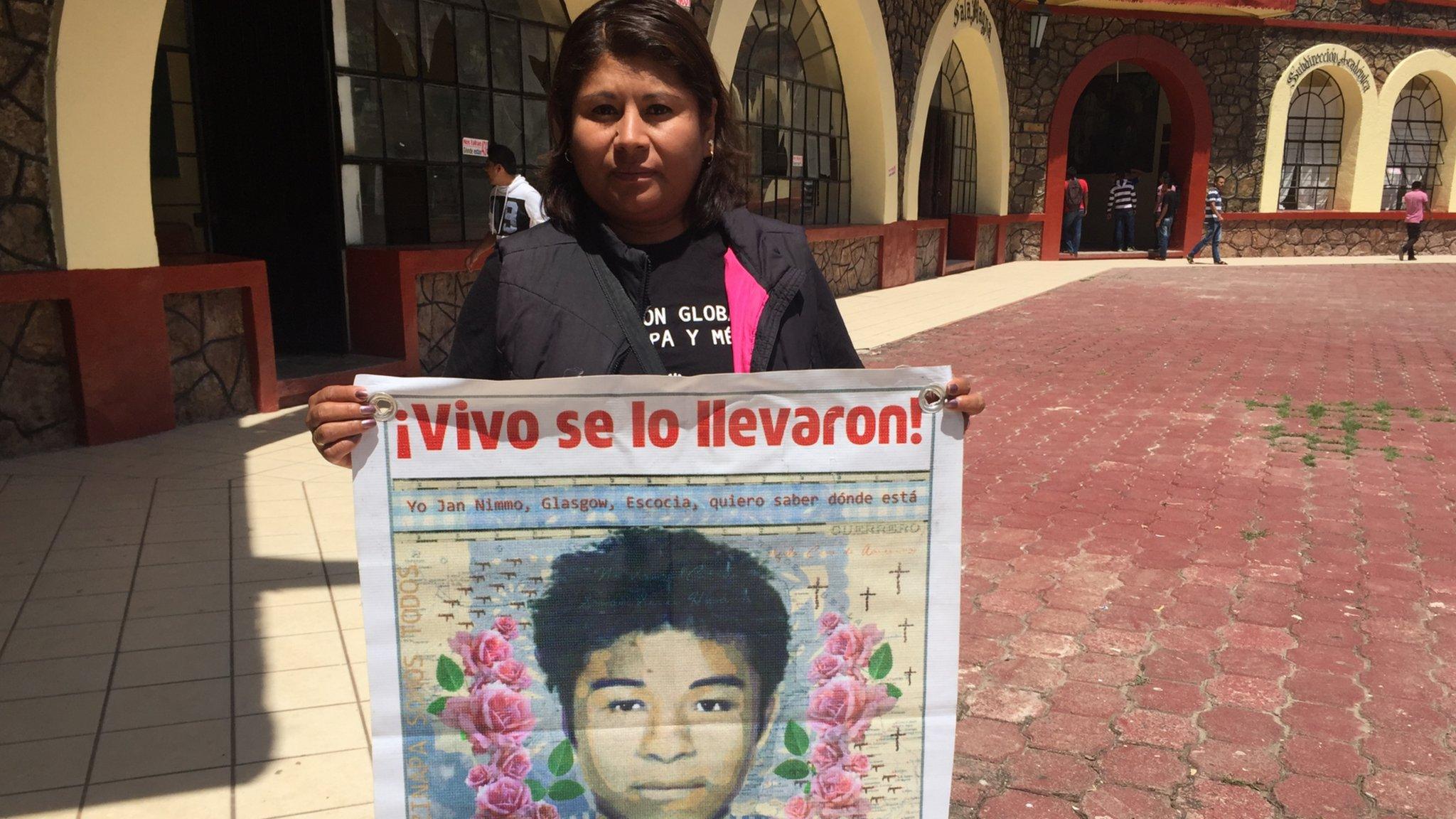The Searchers: Mexican women who look for the dead
- Published
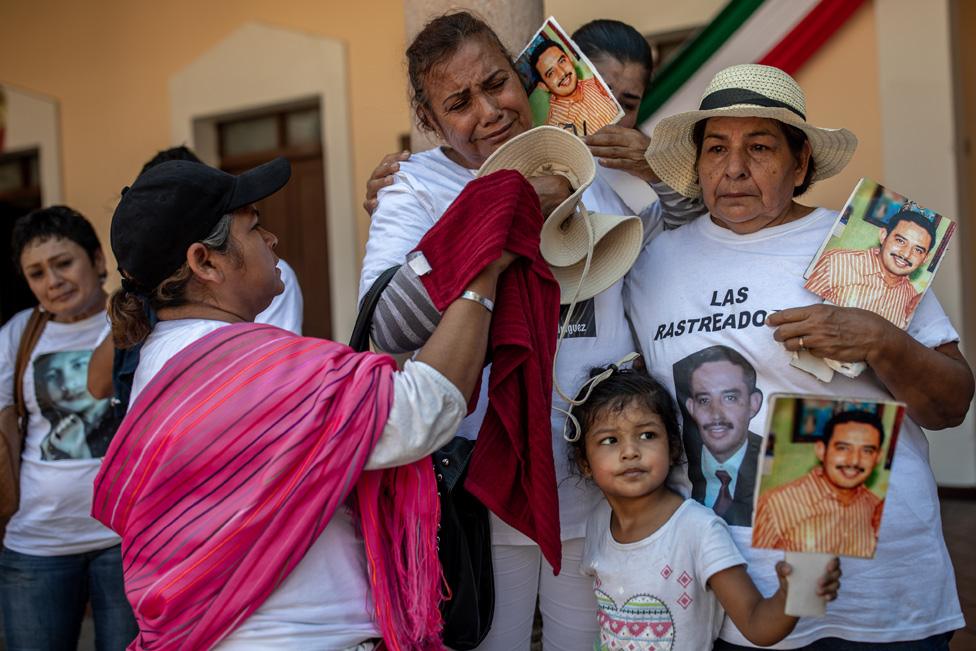
More than 37,000 people have been reported missing in Mexico since 2006, according to official government figures. Many have disappeared without a trace, leaving behind relatives desperate to know what happened to them.
In the northern state of Sinaloa, one mother took matters into her own hands, picking up a shovel and digging for remains whenever she got tip-offs about clandestine graves.
Photojournalist Alejandro Cegarra has documented her search and those of some 30 women who have since joined her.
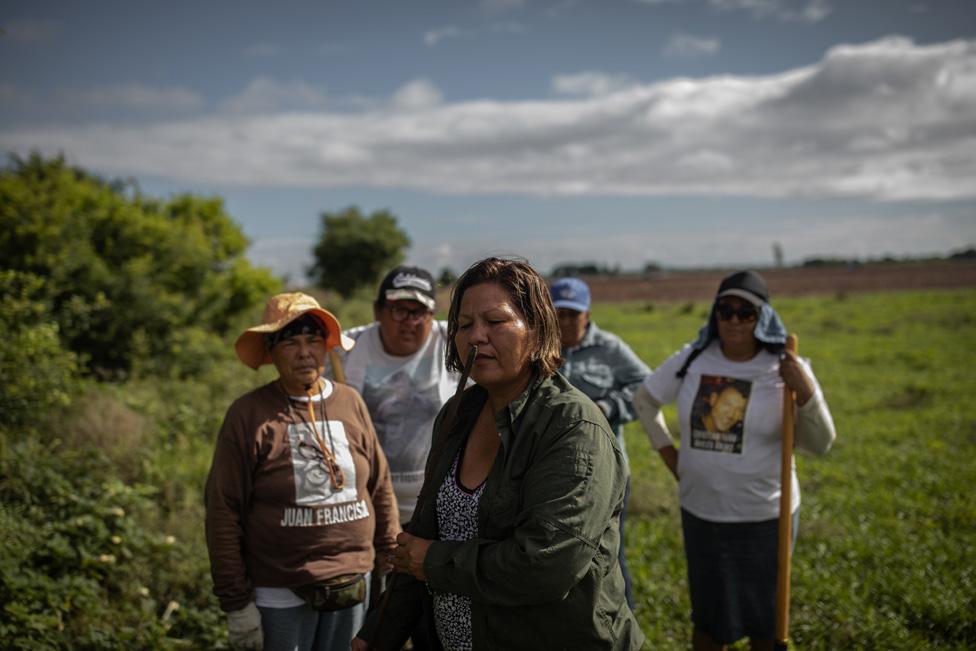
Retired teacher Mirna Nereyda Medina (in the foreground) founded the group, called The Searchers of El Fuerte, in July 2014 after her son Roberto disappeared in the village of the same name in northern Mexico.
Roberto sold CDs at a petrol station at the entrance to the village. According to eyewitnesses, on 14 July 2014 a black pick-up truck stopped at the petrol station and the men inside told Roberto to get in. He was never seen again.
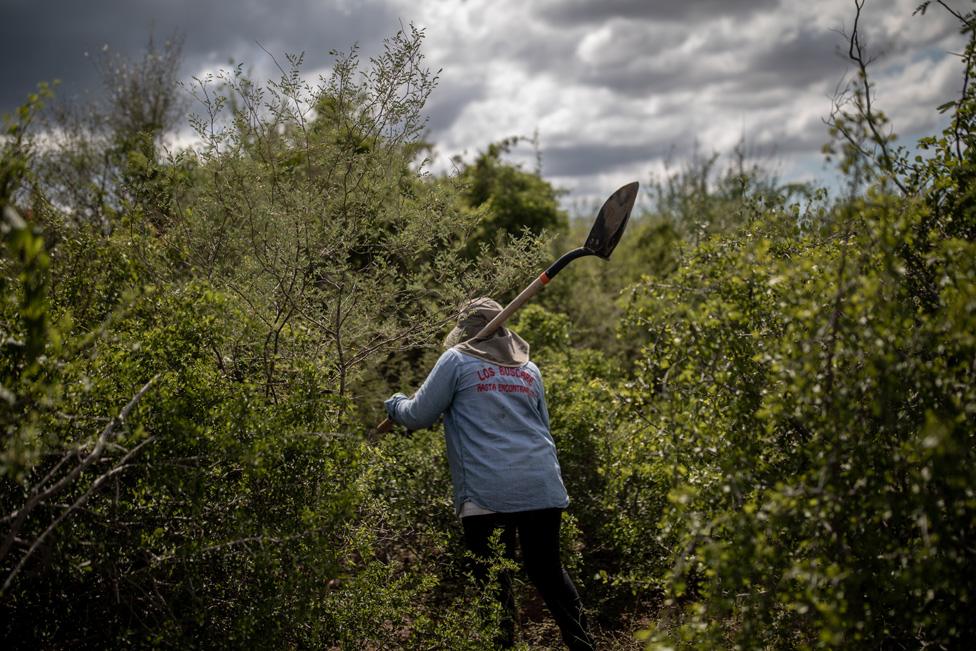
Mirna's case is not unusual. In Sinaloa, 2,700 people have been reported missing and those are just the cases in which relatives filed an official police report.
Most of the missing are thought to be dead. The women who form part of The Searchers are well aware of the statistics and in many cases what they are searching for is certainty.
Miriam Reyes, wearing a hat to shield her from the relentless sun of Sinaloa, is searching for her ex-husband who has been missing since 2015.
"My son needs a father, or at least his body to bury him," she says.
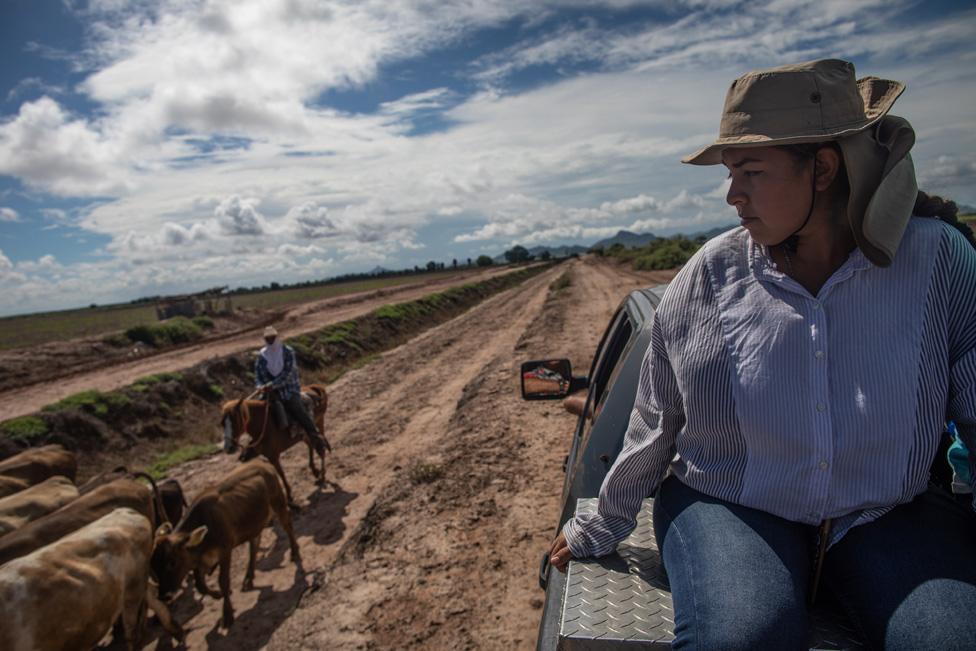
Their tools are simple. Shovels and pickaxes and sometimes a truck to take them to the location of a suspected mass grave.
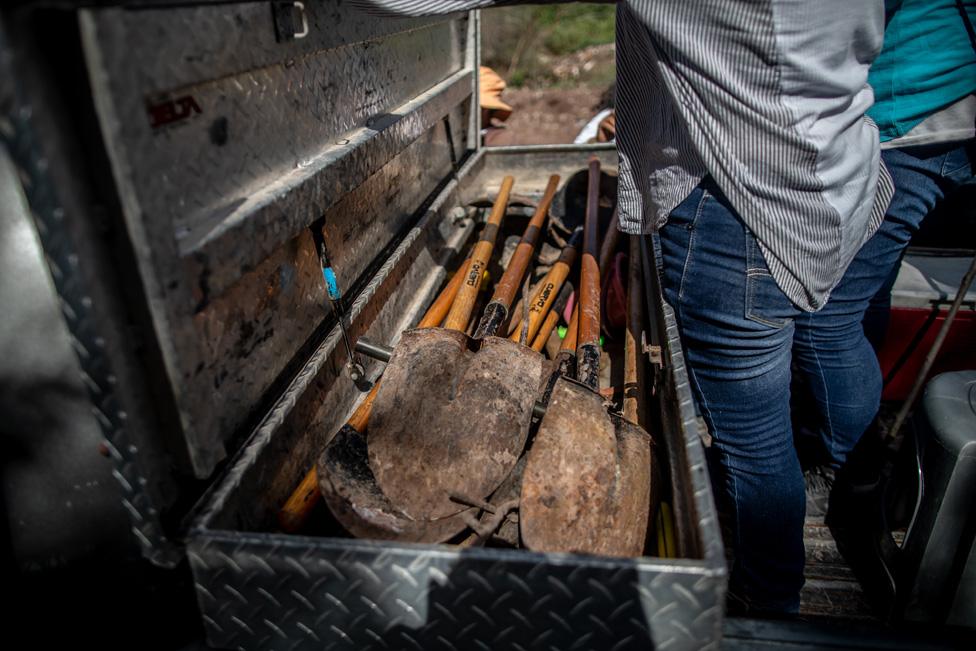
The women receive tip-offs from locals; a farmer whose plough hit a skull, or a cowboy whose cattle stumbled across bones.
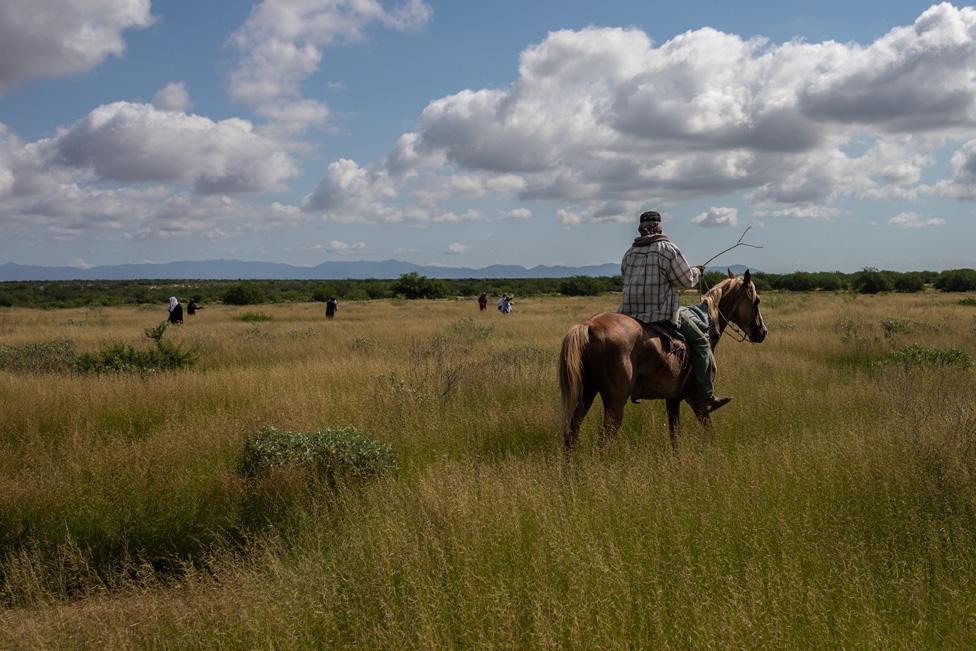
When they receive such information, the group sets off, defying temperatures of up to 41C (105F).
Juana Escalante (below left) is getting ready for one of the searches in the searing heat. She is looking for her 28-year-old son Adrián, who she thinks was abducted.
"In five minutes they destroyed my life. They don't know the damage they do to the mothers," she says.
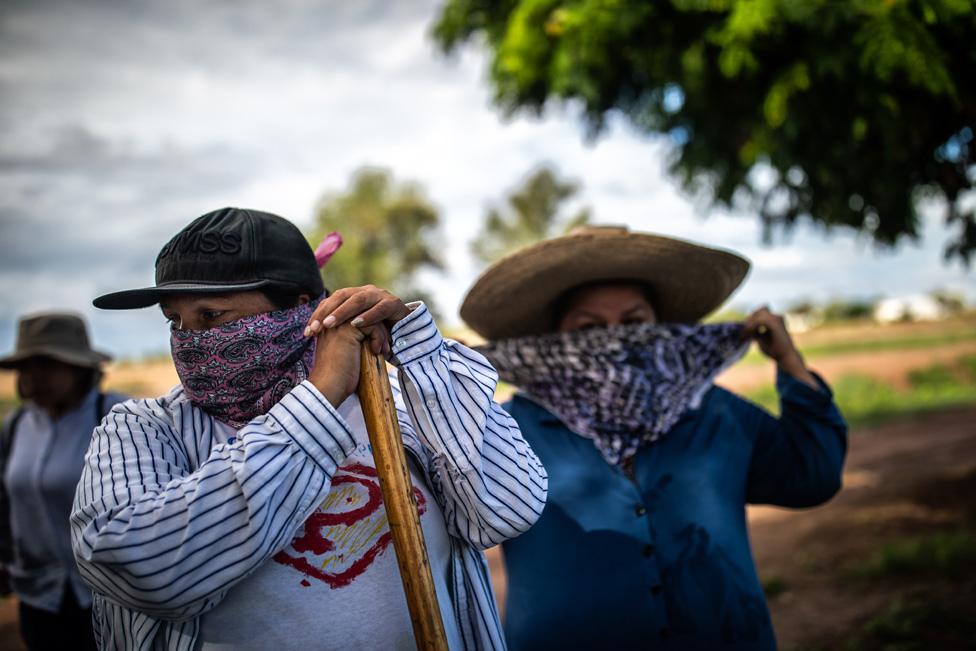
In Sinaloa, the state which gave its name to the infamous Sinaloa drugs cartel, abductions are not uncommon.
People who are thought to have money are kidnapped for ransom. Young men are sometimes forcibly recruited to join criminal gangs. Or they are killed for belonging to a rival gang. Young women are abducted to be trafficked.
In most cases, the family will never find out what happened to those who disappeared.
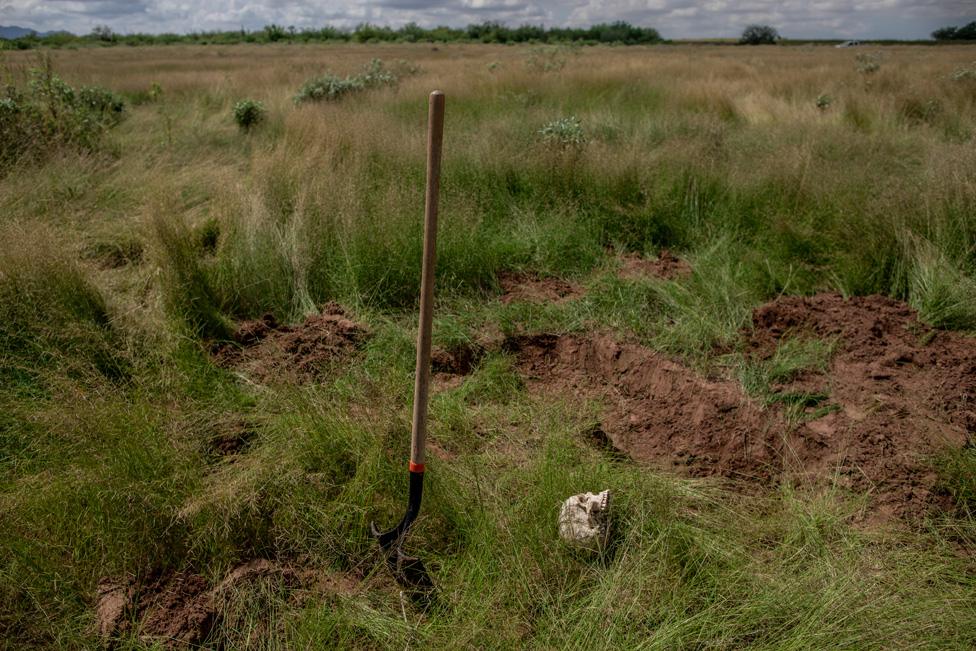
The Searchers want to change that. They know the news they are likely to find will probably be bad. Since 2014, they have found more than 200 bodies.
When they find remains, they send them for DNA testing. If it is a match to one of the more than 700 missing people in their records, they inform the relatives.
So far they have managed to identify about half of the remains they have unearthed.
Here, Mirna hugs a mother who found the remains of her son four months after he went missing.
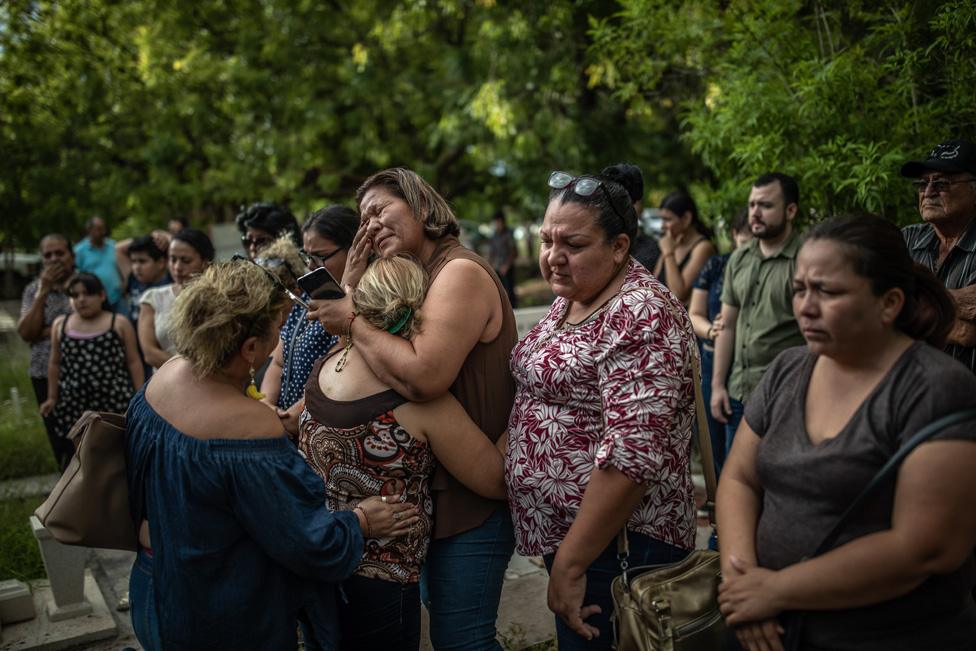
Luis Alfredo Chávez disappeared on 31 January and his remains were found on 30 March. His family gathered for the funeral in the town of Los Mochis.
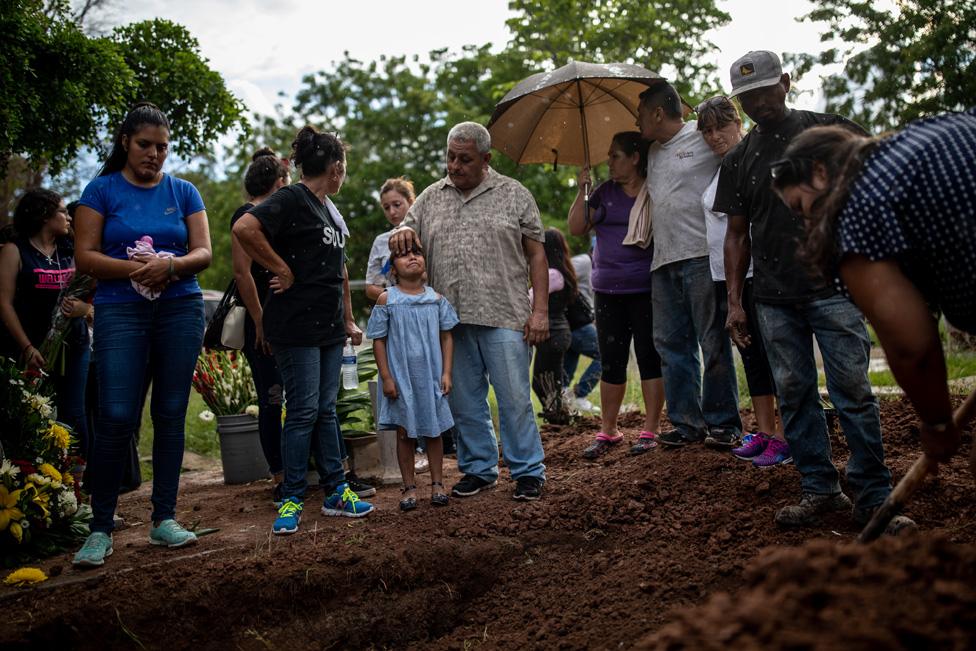
The methods used by the women to search for remains are basic. They use shovels to dig, which they then sniff to detect if there is a smell of decomposition.
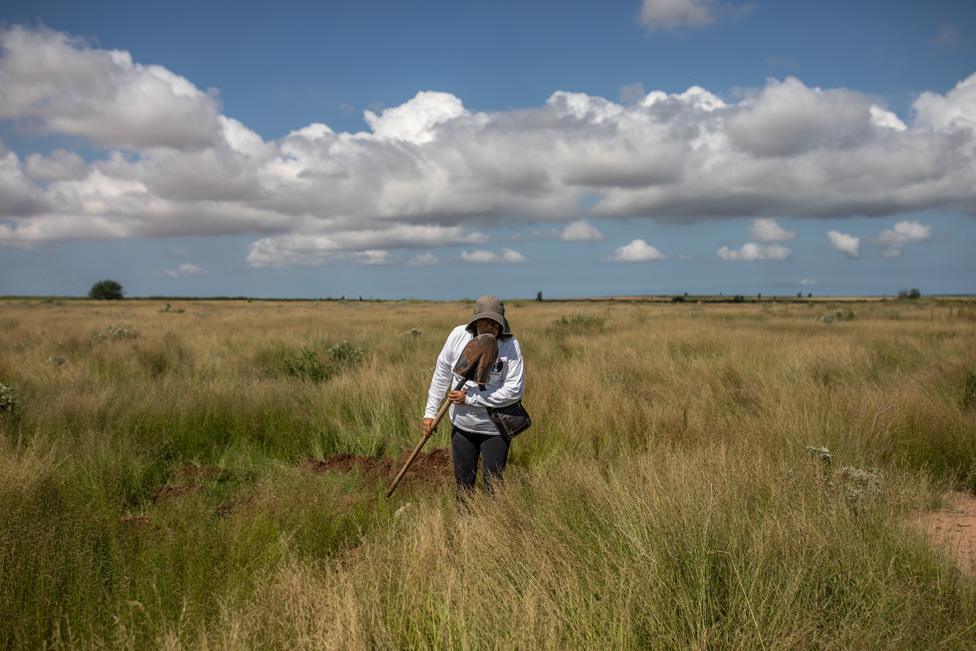
In Mirna's case, it took her no less than three years to locate her son Roberto. On 14 July 2017, three years to the day since his disappearance from the petrol station, a tip-off led her and her fellow searches to the remote mountainous area where her son had been buried in a shallow grave.
The bone fragments they carefully dug up were later matched to Roberto.

Mirna may have located Roberto's remains but she is now helping others in their search for their missing loved ones.
Some, like the woman below who is filing a missing person's report for her son, are struggling to face what may have happened to the disappeared.
"I didn't file the report because I wanted to find him alive," she says about why she waited for six years to tell the authorities about his disappearance.
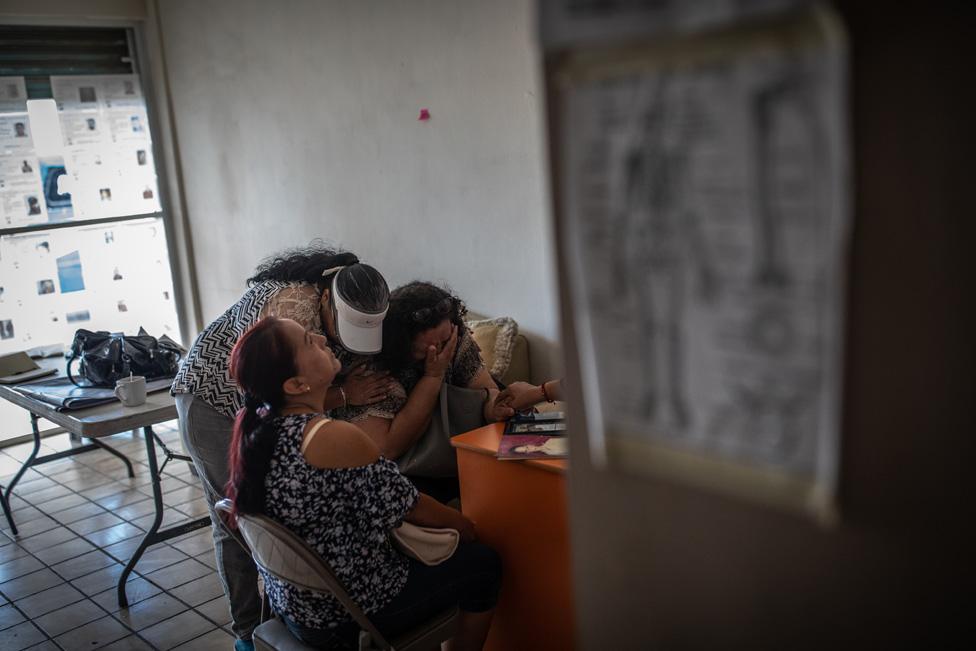
The group consists mainly of mothers, but men are part of it, too. Don Pancho has spent the last four years looking for his missing son.
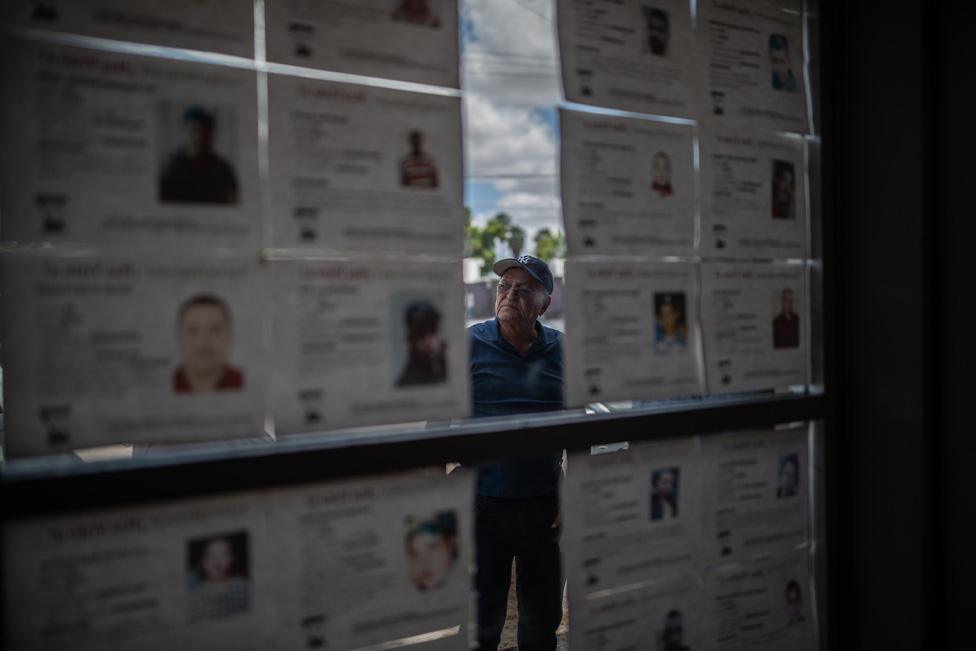
And it is not only parents who are affected. The missing also leave behind children who grow up not knowing what happened to their parents.
Lucía Guadalupe's son disappeared on a road between two towns in 2016. His daughter was left fatherless.
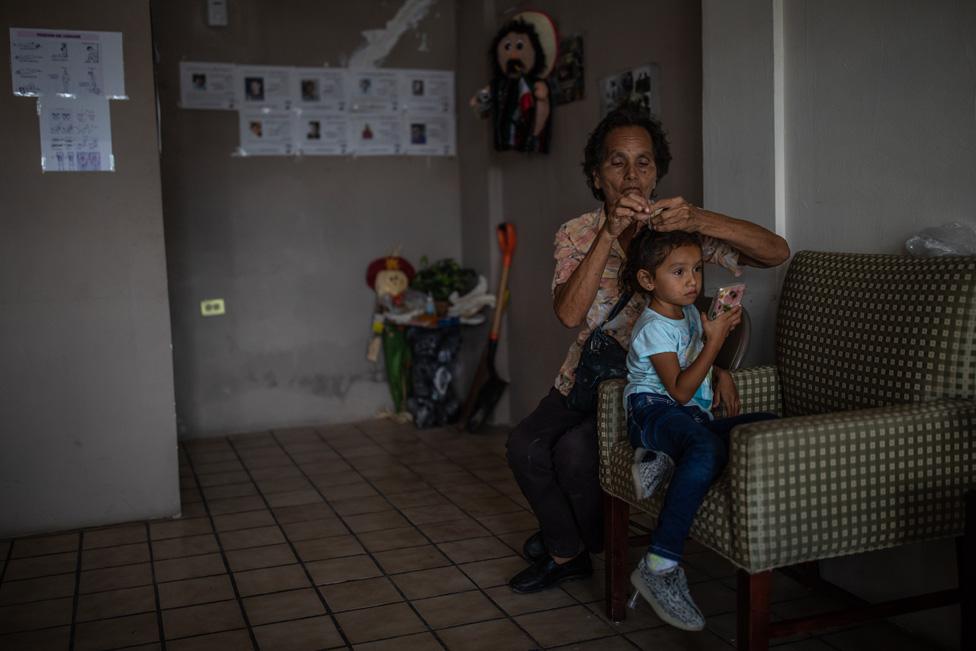
All pictures by Alejandro Cegarra and subject to copyright.
- Published3 December 2018

- Published24 April 2018
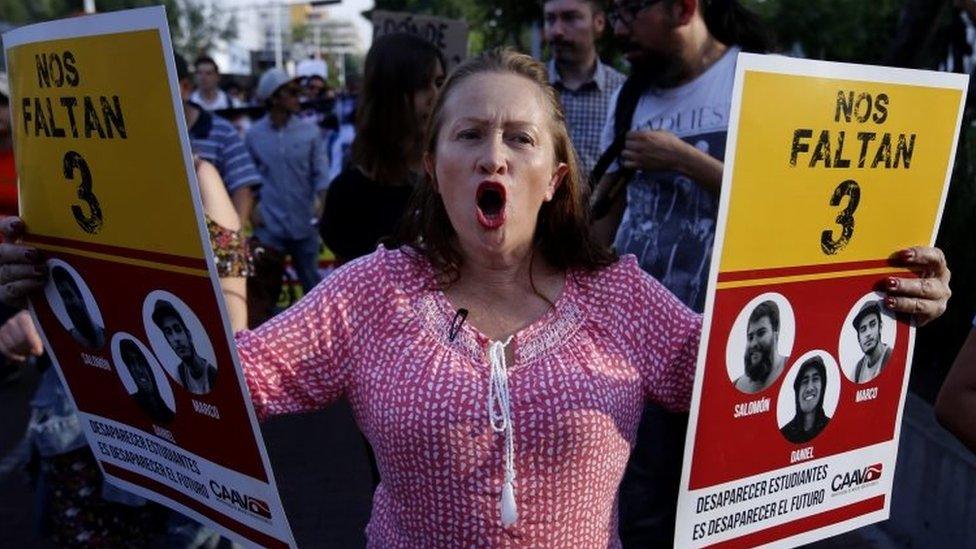
- Published27 February 2018
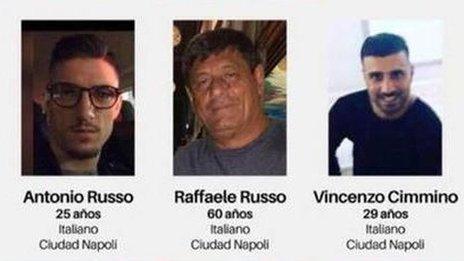
- Published26 September 2016
